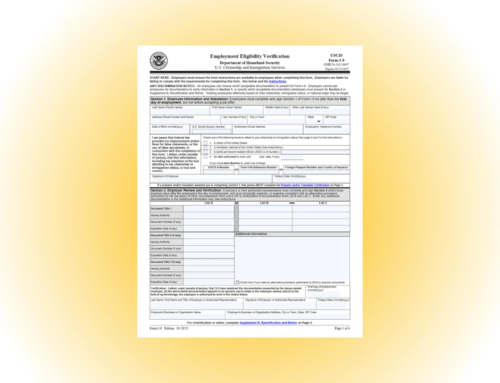As we ring in the new year, the IRS has more changes to announce for 2023. First up, a greater mileage reimbursement rate to accommodate the 9.1% rise in consumer prices over 2022.
What are the new mileage rates?
Beginning January 1, 2023, the standard mileage reimbursement rates for the use of vehicles (cars, vans, pickup trucks, and panel trucks) are as follows:
- 65.5 cents per mile driven for business use, up 3 cents from the 2022 midyear increase and 7 cents higher than the initial 2022 rate
- 22 cents per mile driven for medical or moving purposes, unchanged from 2022
- 14 cents per mile driven in service of charitable organizations (set by statute and unchanged from 2022)
These rates apply to all vehicles, whether hybrid, electric, or gas/diesel-powered. The standard mileage reimbursement rate for a business’s use is based on an annual study of both fixed and variable costs of operating an automobile, while the rate for medical and moving purposes is based on variable costs.
Who can deduct car expenses on their tax returns?
If you are self-employed and use your vehicle for business, you may deduct car expenses on your tax return; however, if you use your car for both business and personal, you must split the expenses. The deduction is based on the portion of mileage used for business. Car expenses can be calculated using actual expenses and the standard mileage rate.
Actual expenses include:
- Depreciation
- Lease payments
- Gas and oil
- Tires
- Insurance
- Repairs and tune-ups
- Registration fees
If you’re using the standard mileage rate, you must use this method in the first year the car is used for your business. If you want to use the standard mileage rate for a car you’re leasing, you must use it for the entire lease period.
For those who drive their personal vehicle for business purposes, use the Fixed and Variable Rate (FAVR) allowance plan to receive tax-free reimbursements from your employee for fixes and variable costs.
Fixed costs are items such as insurance, tax, and registration fees, while variable costs include things like fuel, tires, and routine maintenance and repairs. If you use this method, your car cannot cost more than what the IRS sets as the maximum for each year. For 2022 the maximum was $56,100 for all vehicles.
Another way employers can reimburse employees is flat car allowances. This is a set amount that an employer can provide to their employees to cover the costs of using their own vehicle for business purposes over a given period. The amount varies by location, task, and type of vehicle; however, both parties can agree on a set amount for wear and tear, tires, and fuel costs. These allowance payments are taxable unless measures are taken, so be sure to determine the liabilities for both parties.
A few rules and stipulations worth noting (the following only applies to taxpayers):
Taxpayers cannot claim a miscellaneous itemized deduction for unreimbursed employee travel expenses according to the Tax Cuts and Jobs Act. They also cannot claim a deduction for moving expenses unless they are members of the Armed Forces on active duty moving under orders to a permanent change of station (you can see more details here: Moving Expenses for Members of the Armed Forces)
If you’re a taxpayer looking to calculate the actual costs of using your vehicle, check out Publication 463 by the IRS to see what is new.
If you choose to use standard mileage rates, you must do so in the first year that the car is available for business use, whereas, in the years that follow, you may choose either standard mileage rate or actual expenses.
Read more on the optional 2023 standard mileage rates and the maximum automobile cost used to calculate the allowance under a fixed and variable rate (FAVR plan) in Notice 2023-03. This notice also provides the maximum fair market value of employer-provided automobiles first made available to employees for personal use in 2023.




